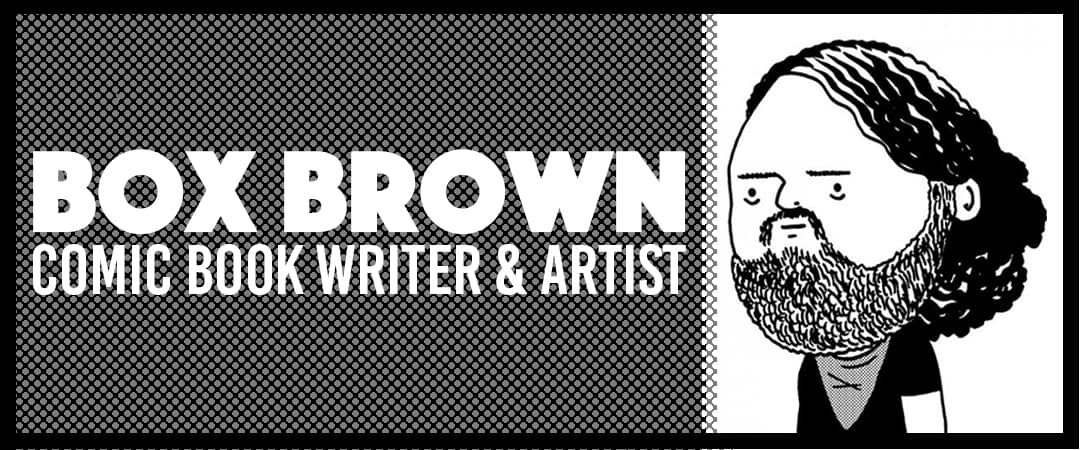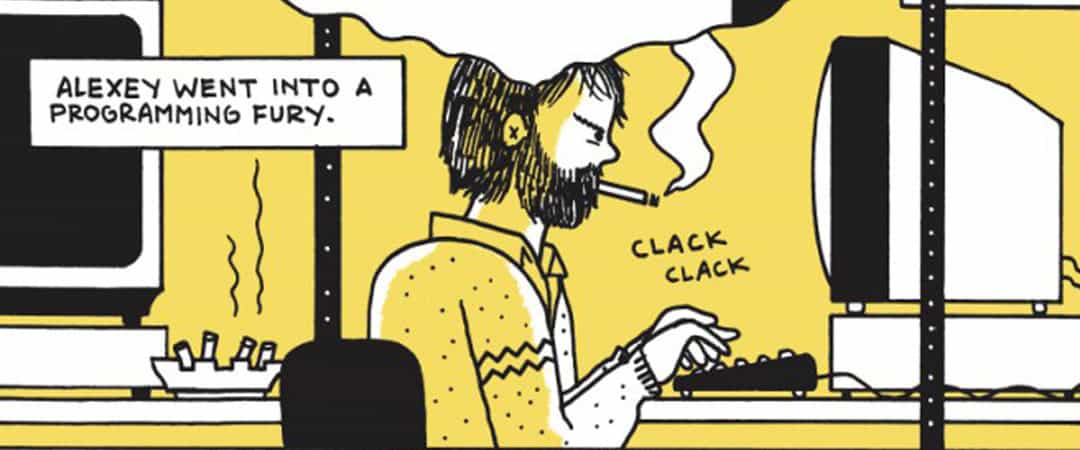
For those children of the ’80s and ’90s, very few things were as prominent during our free time as the WWF and video game console as home entertainment. Modern tales of athletic giants and ancient gameplay arranged in 8-bit 256 color graphics both have history found on an intermediate timeline caught within that matrix of the post-television pre-internet world. As much as that history of wrestling and video games have brought comic book writer and artist Box Brown a bevy of attention, it was first his raw and ingenious webcomics ‘Bellen!‘ and ‘Everything Dies‘ that showed Brown as a writer of insight and intellect. Brown’s is a voice finely tuned by objective self-analysis and documentation through experience. His early art career was not in comics, but as he explains, ‘Performance art and freak show stuff. Stapling my body, eating lightbulbs and smashing bottles on my head. Poetry, screenwriting and a few half-finished novels. I wrote a few short stories, made really stupid songs. I was just lashing out at anything.’
For ‘Andre the Giant: Life and Legend,’ Brown brought the life of French-born Andre Roussimoff to the pages of his first major graphic novel for publisher First Second Books. Brown’s novel follows young Andre from his youth to the final act of his professional wrestling career when his body was slowly deteriorating from acromegaly. Brown chronicles the man behind the myth and the machine that built the mythology of Andre the Giant. The book is a thorough dissection of a performer whose physical flaws were also his most valued attributes.
With ‘Tetris: The Games People Play,’ Brown has crafted a worthy follow-up to the New York Times bestselling ‘Andre the Giant.’ ‘Tetris‘ follows Russian computer engineer Alexey Pajitnov as he devises the breakthrough game to the legal battles that removed creator from creation, Pajitnov’s holy grail of puzzle games tossed to the wolves of corporate greed. Brown’s ‘Tetris‘ is a beautiful meditation on the role of games and their evolution alongside our own.
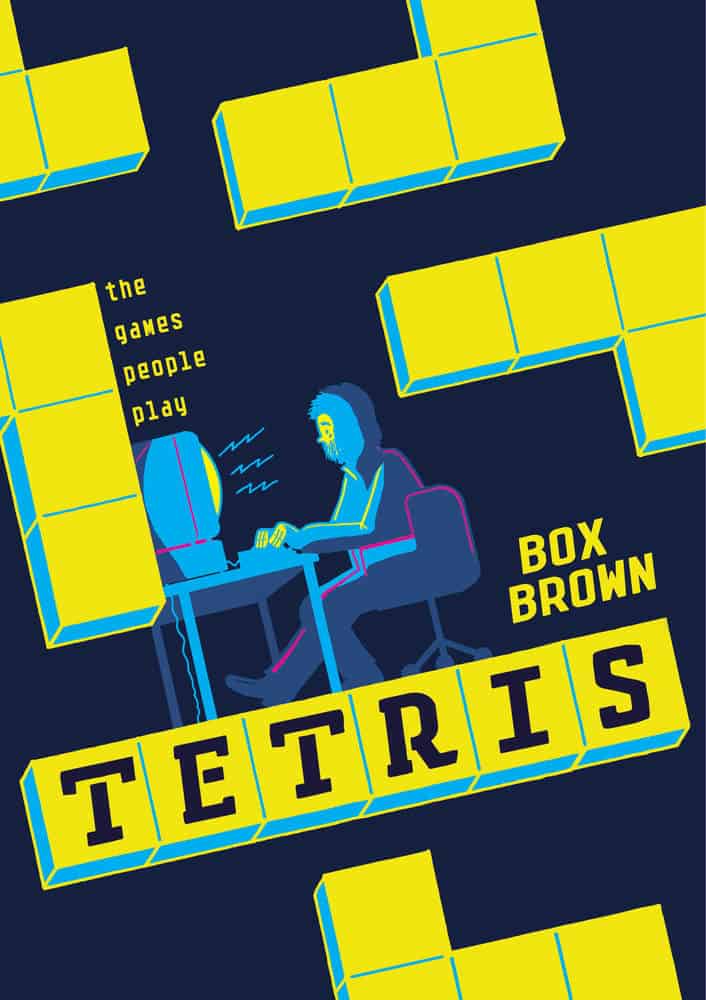
‘Tetris: The Games People Play’ by Box Brown | published by First Second Books
CJ: There’s a common theme between quite a few of your protagonists – at the core of Andre the Giant, ‘Tetris’ creator Alexey Pajitnov, and even a character like the lead in ‘Mundo Jelly,’ they all have a sense of peace in the world despite reasons to be anything but peaceful. Andre the Giant wasn’t a man who complained about his illness. If Pajitnov were full of anger and frustration at Tetris being taken away from him, it would be justified — but he was okay with all that happened to him. Do you see a similarity across the characters you write about? What’s the attraction to these content yet damaged lives?
BB: You know, maybe it’s just my general outlook on life. We all have such difficult lives. I admire both of them for going through these difficult issues and rising up. I kind of see the world as an almost impossible landscape to suffer through and yet, we love it. We survive and thrive. To me, that’s heroic that’s triumphing over adversity. Just living.
Andre and Alexey both ended up in really extreme circumstances, but at the heart they’re both human like you and me. I guess I also admire hard work and daily practice, focus and vision and I think both Andre and Alexey had that.
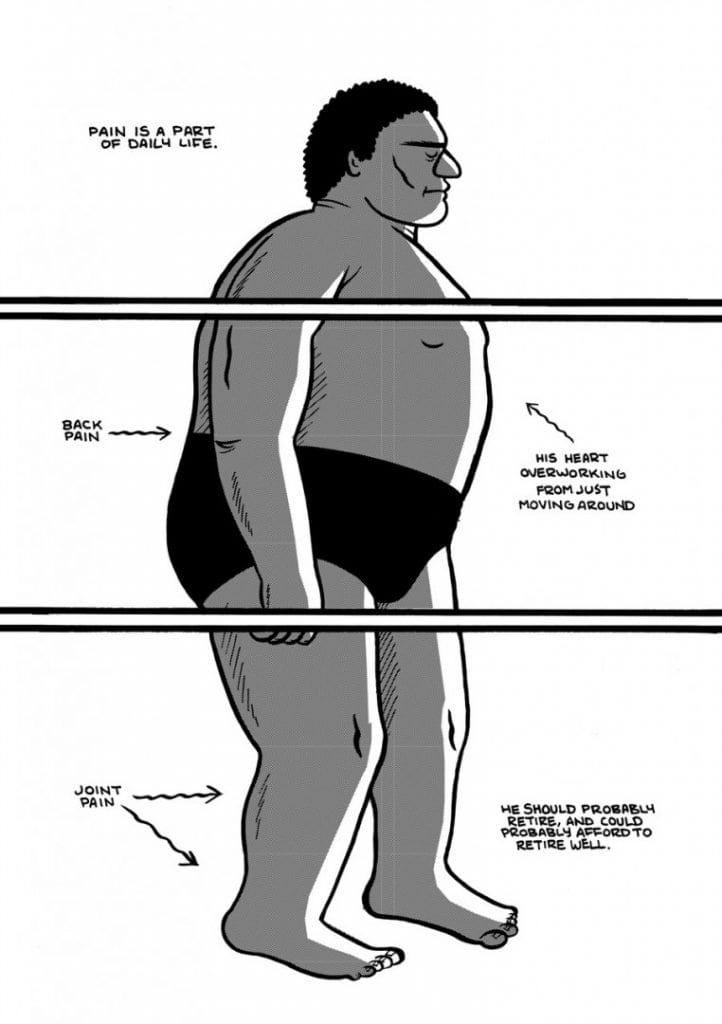
‘Andre the Giant’ (Excerpt) by Box Brown
Alexey Pajitnov approached the creation of Tetris as an artistic endeavor, and it seems like he was just happy that he finished the game he wanted to make and people enjoyed it. With all of the legal battles over ownership, do you think he saw it as Tetris was taken away from him?
I would think so. This is what was compelling to me from the beginning. It’s like all art. You sit down and you make something with your hands and brain working together and then you release it to the world. It’s weird because you both want it to continue being just for you but you also want it to be seen and interpreted by the world. But, once the work is out into the world it’s not yours anymore. People will play and interpret the work how they see fit and that’s kind of the beauty of it.
The weirdness is that art becomes a product and to survive you WANT that to be the case but it also can kind of takes something away from the work. This is a really extreme example of what can happen with success. It can really change you, it can change your work, it can fucking kill you. I’m not sure most artists make work thinking that it’ll make them rich and powerful but then it just can happen.
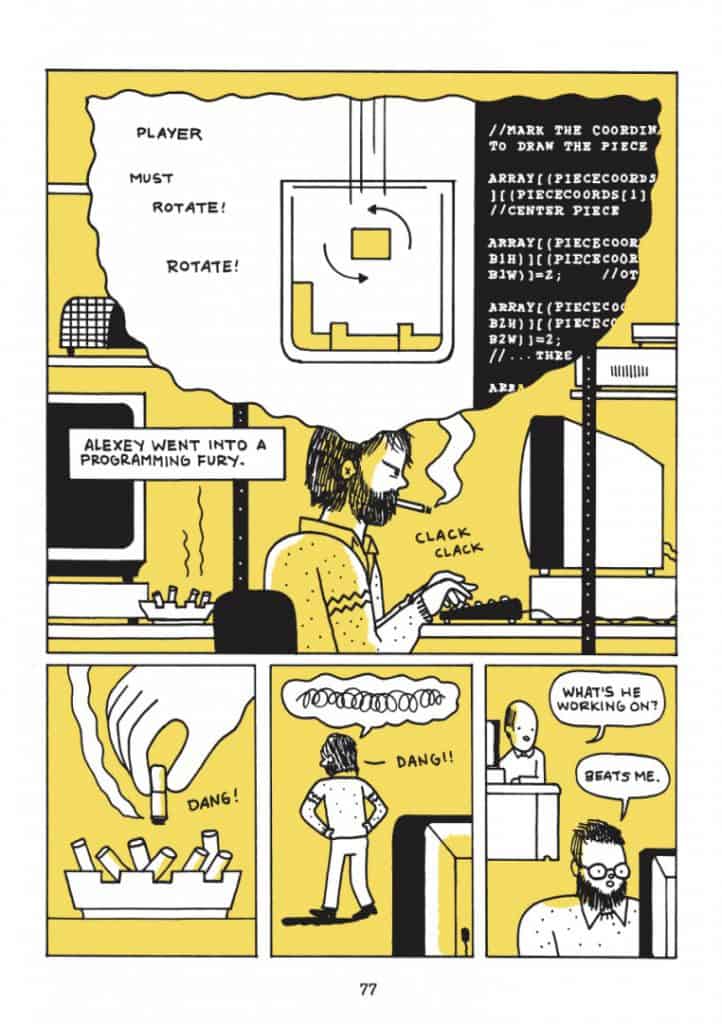
‘Tetris: The Games People Play’ (Excerpt) by Box Brown
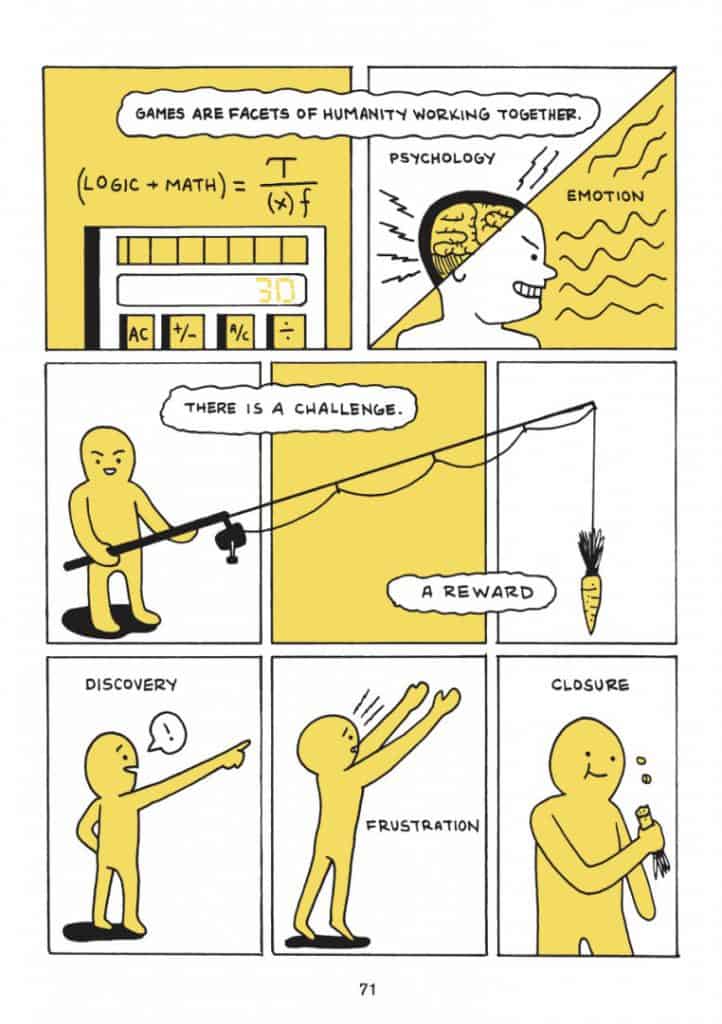
‘Tetris: The Games People Play’ (Excerpt) by Box Brown
The history of game play is at the core of the book, and you highlight a game with its own history — the business negotiation. The lawyers and everyone going after Tetris are all playing a giant puzzle of their own creation. It plays out brilliantly — you never point it out, but after the second read, there it is. It’s an incredibly well-layered book.
With so much going on, are you prioritizing the aspects of the book to guide the audience in having the ‘right’ experience? Is there a right experience?
I don’t know really? I’m mostly trying to amuse myself and just hoping people relate to it. This story was so complex I was mostly trying to keep it simple just so people would be able to follow it. Even still it was difficult.
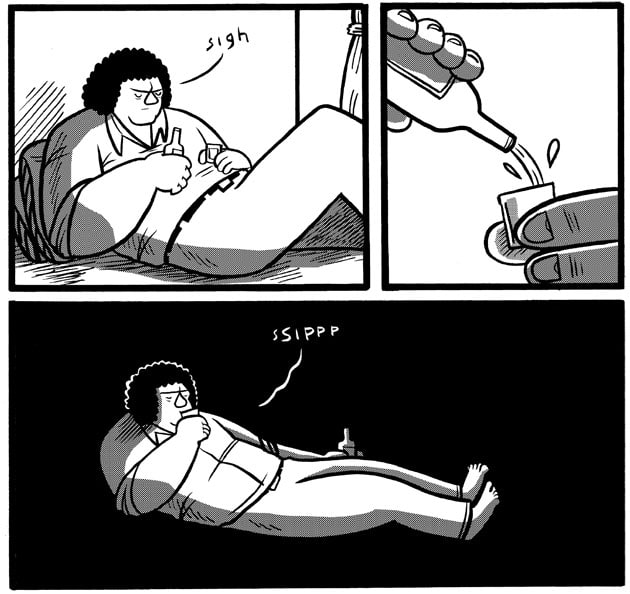
‘Andre the Giant’ (Excerpt) by Box Brown
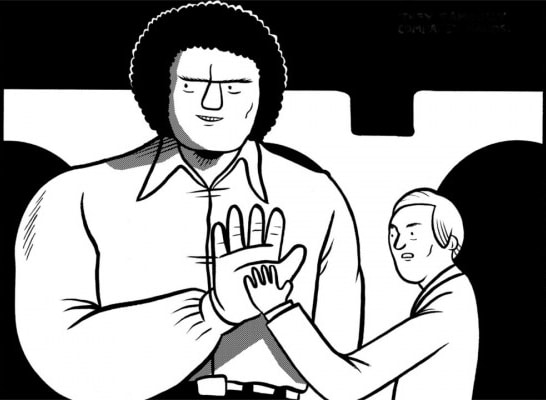
‘Andre the Giant’ (Excerpt) by Box Brown
There is a great deal of care spent on creating a truthful depiction of Andre Roussimoff in your book ‘Andre the Giant.’ ‘Tetris’ has that same amount of care as we follow the game through its many owners. It’s a documentarian approach as opposed to a Hollywood style retelling where events are heightened by removing characters, combining events, and a number of other falsehoods.
Did you toy with combining any of the players in the ‘Tetris’ legal saga, or leaving anything out? Were there any adjustments made to the real-life narrative for drama’s sake?
This is something I toy with for sure. It’s about finding a balance. I honestly did it more in ‘Andre the Giant.’ There’s at least one scene that’s an amalgam of three or four stories combined into one.
It’s about finding a balance between narrative and complete documentary. I don’t really want to make comics that are ‘based on a true story’ the way movies are, but you can’t do complete documentaries with just interviews of people talking. I’m an enormous documentary fan and derive great inspiration from them. I hope to err on the side of documentary.
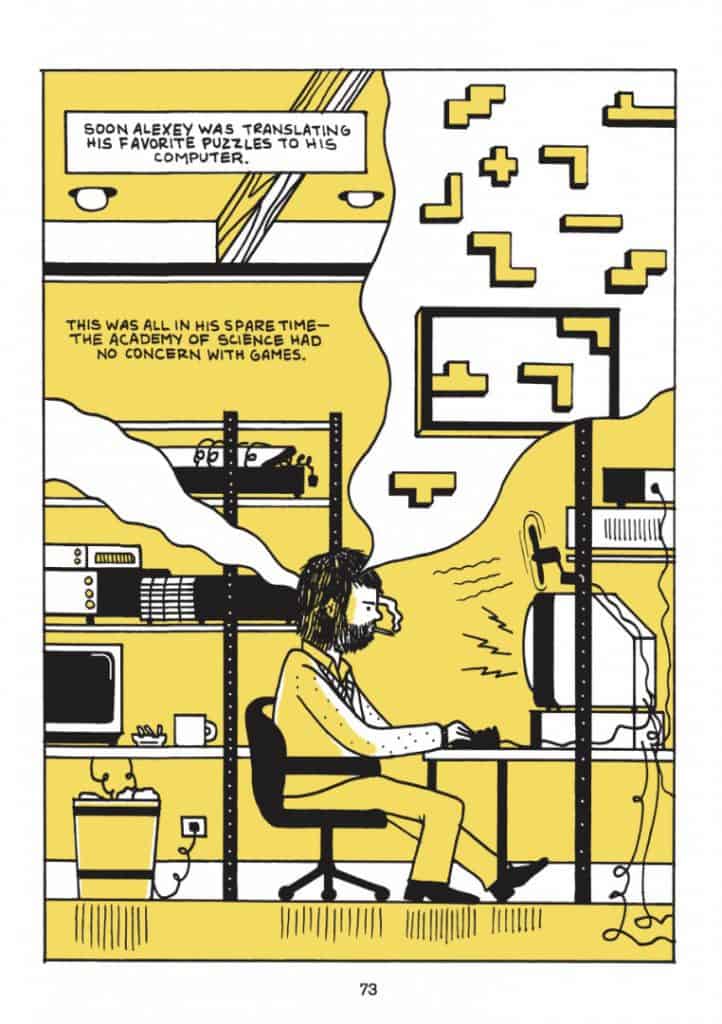
‘Tetris: The Games People Play’ (Excerpt) by Box Brown
There’s an interesting lack of antagonists in your work — there is no single ‘villain’ in either ‘Andre the Giant or ‘Tetris.’ The narratives in your work are pushed by concept, which is an incredible feat that makes each book far more compelling than a simple 1st/ 2nd/ 3rd act structure. What Andre fights against is his illness, a losing battle. Alexey Pajitnov and Tetris are struggling to simply exist in the world and connect with an audience.
Both are examples of how a strong concept in the hands of an expert storyteller can take the comic form into new places. As a reader, your books are always refreshing experiences. Is this a fight against the norm of storytelling, or simply a matter of your natural instincts?
I think it’s mostly instinctual. I heard an interview with Louis CK recently and he was talking about the way Alan Alda acts. He just kind of goes through the script and feels it out. I kind of make comics in the same way. I tell stories to my wife and friends the same way too. There’s some sense of story and sequence and build but I guess it’s non-traditional. I’ve actually attempted many times to follow 3-act structure and journey of the hero and all that but it just doesn’t feel right to me. Although, I do have a fantasy of creating an epic hero.
I’ve actually attempted many times to follow three act structure and journey of the hero and all that but it just doesn’t feel right to me. Although, I do have a fantasy of creating an epic hero / Dragonball type story that would maybe follow more of a real structure but I’d probably veer off.
I could see how demonizing the lawyers and many businessmen and their greed would have been an easy thing to do, yet you took almost a zen-like approach. That omniscient documentarian point of view. Like Alexey with Tetris your books are at first personal and inspired, but take on a bigger life once the public comes into it. Are you writing thinking of the public response?
At times I do fall into the trap of thinking about the response to the book. It’s difficult not to at times. But it really ultimately doesn’t feel good to think about it that way. I really just try to do my best and hope for the best. My editor is really good and reading the work and letting me know what she thinks people will be thinking and I kind of let her guide me if things need to be changed.
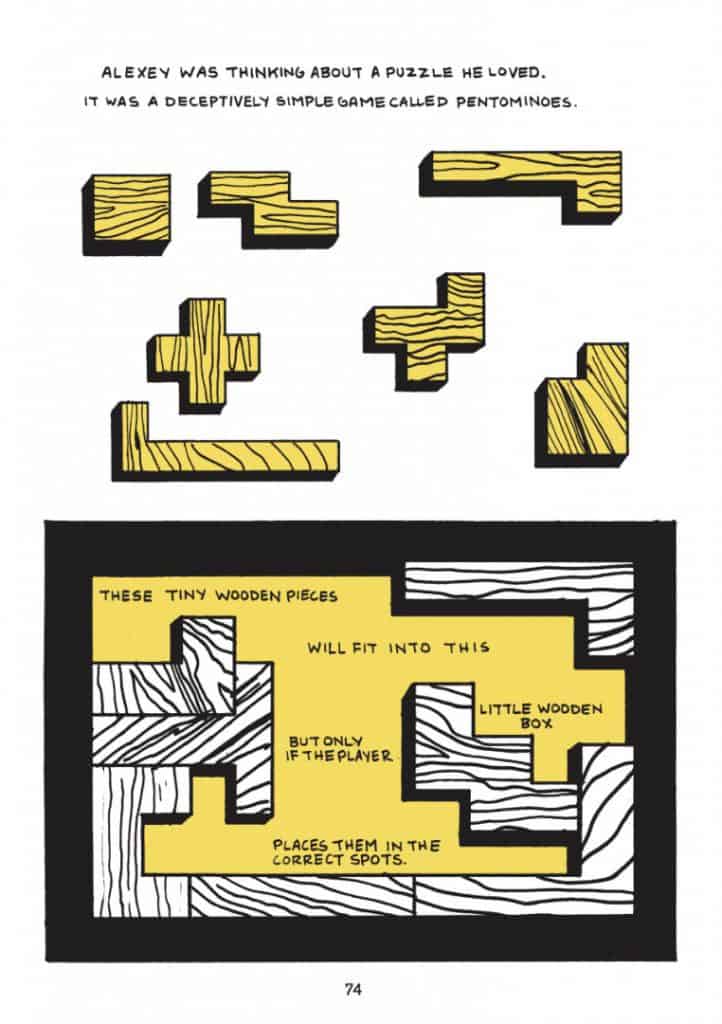
‘Tetris: The Games People Play’ (Excerpt) by Box Brown
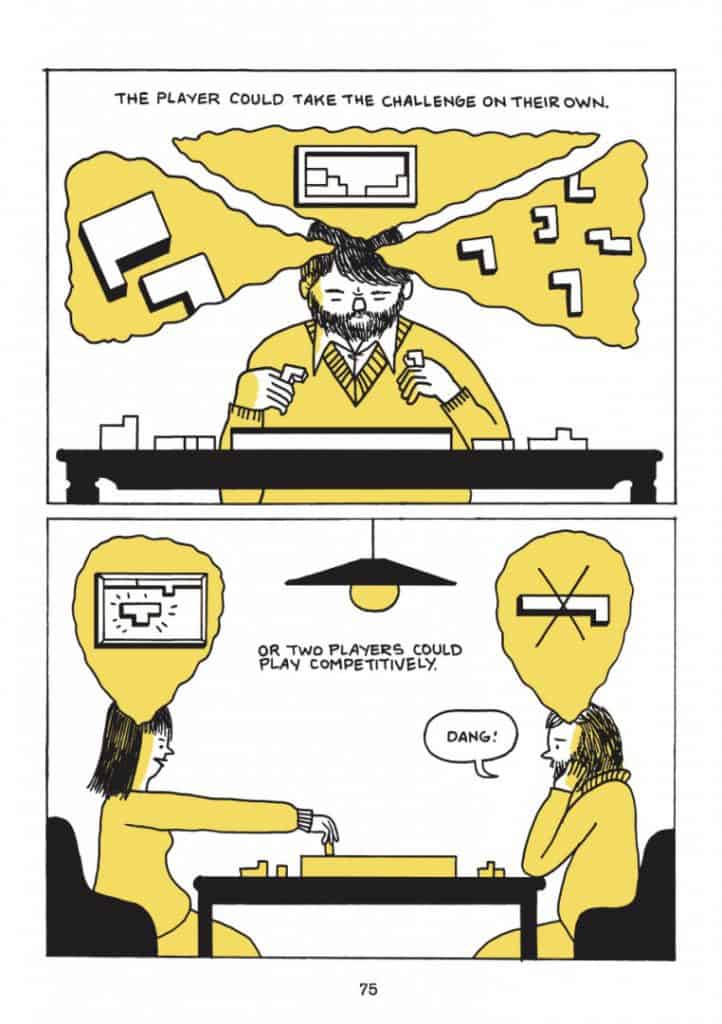
‘Tetris: The Games People Play’ (Excerpt) by Box Brown
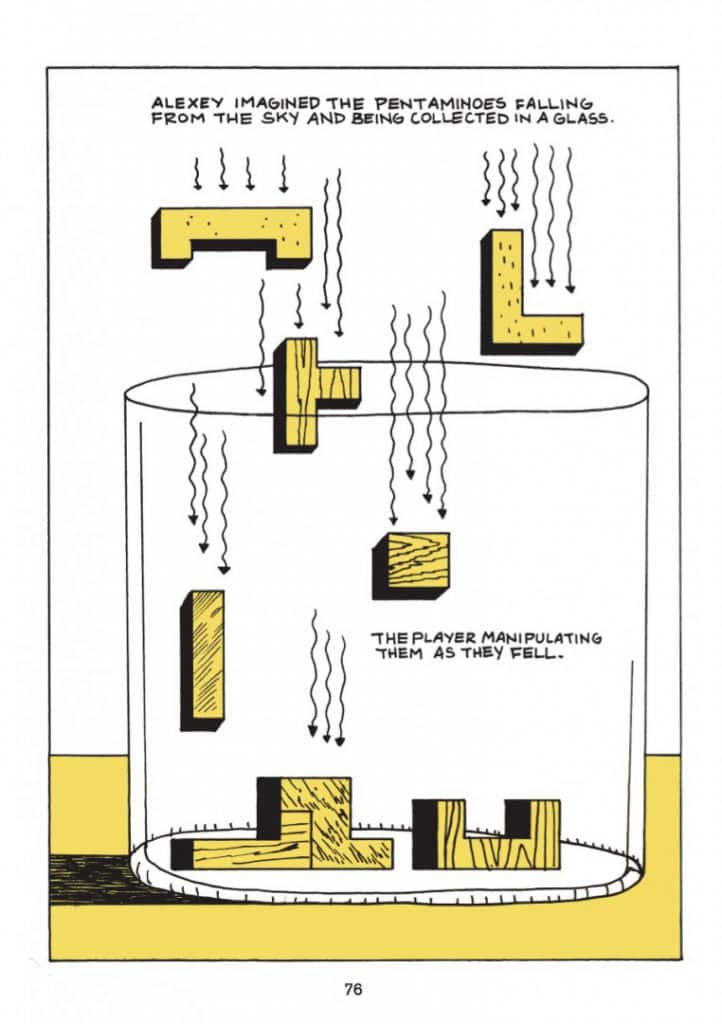
‘Tetris: The Games People Play’ (Excerpt) by Box Brown
‘Tetris’ isn’t so much about Alexey Pajitnov but the game itself – the trajectory it took from creation to being the global hit that we know it as. The book follows the game and the many hands wanting to own it. The book covers a massive timeline from Neolithic man to our current time. Did you always intend to follow each character, or was there ever a thought of following a single person, ala ‘Andre The Giant’?
The cast was an ensemble in ‘Tetris.’ Before I started working on the actual comics and was still in the thumbnailing stage I realized there was a family tree surrounding this game. So, I drew out this big family tree of all of the players involved in these negotiations.
As much as ‘Andre’ was about Andre, it was also my love letter to pro-wrestling and I wanted Tetris to have the feel of a love-letter to video games. That meant for me that we had to go back to cavemen days and figure out why we feel these impulses to create because they existed WAY WAY before commerce did.
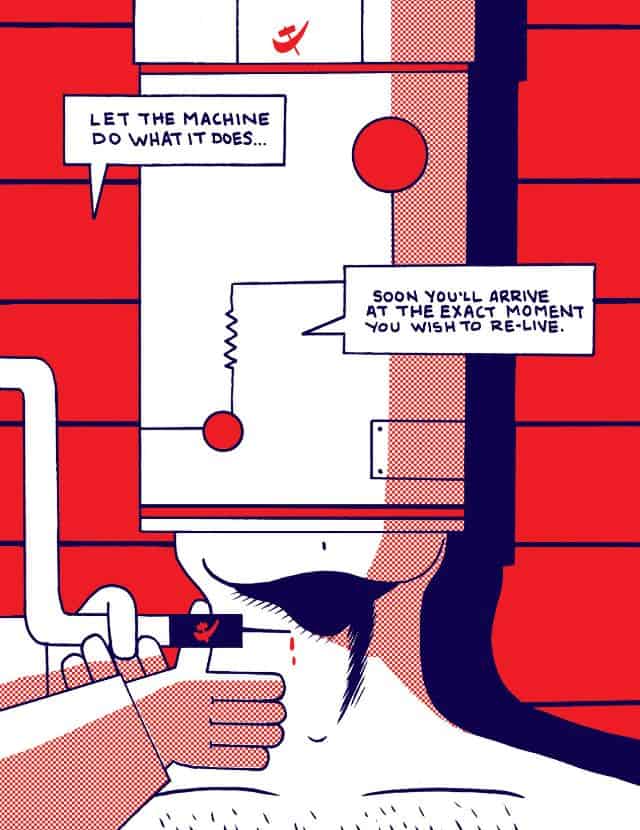
‘Memorexia’ (Excerpt) from the collection ‘An Entity Observes All Things’ by Box Brown
Your comics have gone from being released as digital only to in print through your own Retrofit Comics, and with ‘Andre the Giant’ and ‘Tetris,’ your books are now published by First Second Books. Are your stories evolving and the publisher is a secondary element, or are you creating work for specific release paths? Would a book like ‘An Entity Observes All Things’ fit within your work published by First Second Books?
I want to do more fiction for sure. I plan on working on a fiction book for a few months once I finish my next graphic novel from First Second. It’s weird tho, with fiction. You really need to finish it before you submit it. At least finish, writing it and maybe thumbnailing it and then draw a bunch of characters all that. I just like to fucking DO IT.
I always know that with Retrofit I can publish anything I can think of so sometimes I just do it for freedom’s sake. With big book companies, the book has to have a selling point, etc. Maybe one day I will do a big fiction book with them. I would like to.
As a publisher yourself, what are you looking for in the books Retrofit releases?
You know, I’m not totally sure myself. I approach it kind of the same way I do with comics. I just kind of feel it out. Sometimes I see something and I know immediately that I want to publish it. I usually want something that stands out visually, looks different than other stuff. But, it’s really a gut thing.
Are you making time between books to do shorter comics? Will there be another collection like ‘An Entity Observes All Things’? Is making short form comics an important part of your creative process, or have you moved beyond them being interesting?
YES! I am really looking forward to making mini-comics and stuff in between these big graphic novels. I have some free time coming up from about Nov. to Feb / March and I plan on working on mini-comics and fiction. For me working on fiction helps me figure out where the story is in non-fiction work. Expect more!
